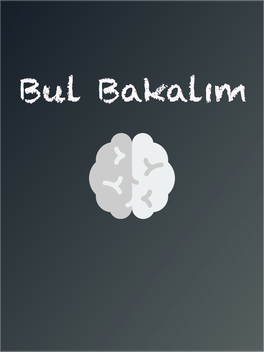Most Popular Playstation 3 Games - Page 172
-
Bombproof Bob
An explosive, fun, physics based puzzle game using a unique mechanic of movement caused by explosions. -
Flip Stones
Flip Stones is a new puzzle game that will tickle your brain. The challenge of Flip Stones is to turn all stones to gold by simply one or two touches - but avoid crossing your own path. Just try and have fun discovering the mayan treasure! -
Haunted Hospital Asylum Escape: Hidden Objects
Experience the dread of the haunted hospital! Enter the demolished asylum and look for the hidden objects scattered all over the place. Watch out, anything can be found in the hospital room of terror! If horror in the hospital is what you're looking for, and if you're good at escape the hospital games, you're at the right place! -
Magic Cats
Dozens of levels to beat are sure to keep you entertained for days. Can you clear all the challenging puzzles of Magic Cats? Give it a try! -
Letter Boost
This is a beautiful minimalist word puzzle that you can play all day. Swipe the board or make words to boost the letters! Merge two letters and they are boosted into the next letter in the alphabet. Or make a word and all letters used are boosted! When you use or merge Zs, they disappear and award bonus points. The game ends when you have no open spots and are unable to move pieces or make a word. This is a highly addicting brain game with no timer and no lives to buy so you can play all day for free! Give it a try! -
Rebellious Numbers
Be mad with Rebellious Numbers! One second for sorting from smallest to largest or largest to smallest -
Pandoras Books
Taking word games to a new level, this brain teasing game will challenge your mind and your senses. Use your skills and help Pandora defend cities of classic books by unscrambling words and defeating monsters. -
Spell Blitz
A magical mix of Bejewled Blitz and Ruzzle! A fast paced magical word finding game. Explore playing with different charms and spells to make your way to the top of the weekly tournament leaderboard. Find words quickly on an ever evolving board. Combines Bejeweled Blitz with the word play of Boggle or Ruzzle. Customize your strategy with special powers to boost your style of play. -
Spot the Difference Blitz
There are 15 beautiful hand-drawn levels for you - play in single-player or with a friend. Try to get the best score of all Game Center players of "Spot the Difference Blitz"! There are 3 modes of our game: demo-mode, single player & two players. Play together and get more fun! -
Tiny Stack
Build your stack of candies, marshmallows and other sweets without letting them fall off the screen! Featuring extremely cute characters in a colorful world, this 2.5D physics puzzle game and its addictive gameplay will provide you with tons of fun! Explore 4 all different themed worlds, each with unique challenges and special events. Will you be able to protect your pile of sweets from weird candies and bubbles falling from the sky or hungry ghosts in a haunted mansion? -
Word Trace
Word Trace is easy and relaxing word game where you slide letter blocks up and down in order to find the hidden word. There are 16 different categories of words to choose from. It starts very easy but gets more challenging in later levels. -
Xega Brain Trainer
Xega Brain Trainer is a unique, fun, excellent and addictive game, developed to deliver the IQ Quiz Contest. This unique quiz Game offers fun and exciting quiz questions that will keep you entertained and test your general knowledge with history, science, culture, sports, fun facts, word puzzles and many more. The game is presented in an outstanding visuals and graphics as well as great sound effects for an immersive and an exciting experience. -
Bul Bakalım
2024
Bul Bakalım
2024
Bul Bakalım is a word puzzle game that lets you learn new words while playing. You have to swipe your finger over the letters on the board to form words in 1 minute. The longer the word, the more points you get. You can play solo or with other players online. You can also create your own custom games with your own rules. -
Active Color
From the makers of Jewel Frenzy comes Active Color, a cool, colorful, and explosively addictive puzzle game that will keep you entertained for hours. -
66 Bricks
2014
66 Bricks
2014
Give you 66 bricks, build your own tower. Physical version of Tetris, be arbitrary place bricks, build a variety of towers, challenge the patience and balance limits, see how high you can stack. How to play: Move your finger left and right to adjust the position of the bricks, move your finger down brick drop quickly , tap the screen rotate bricks. -
Dual Spin
Do you have the skills to master a simple gem puzzles game that can be really demanding? In our Dual Spin Game we require to arrange the gems in correct order. It looks easy, but it is definitely hard to master. If you love thinking challenges, try Dual Spin, you will not be disappointed.

